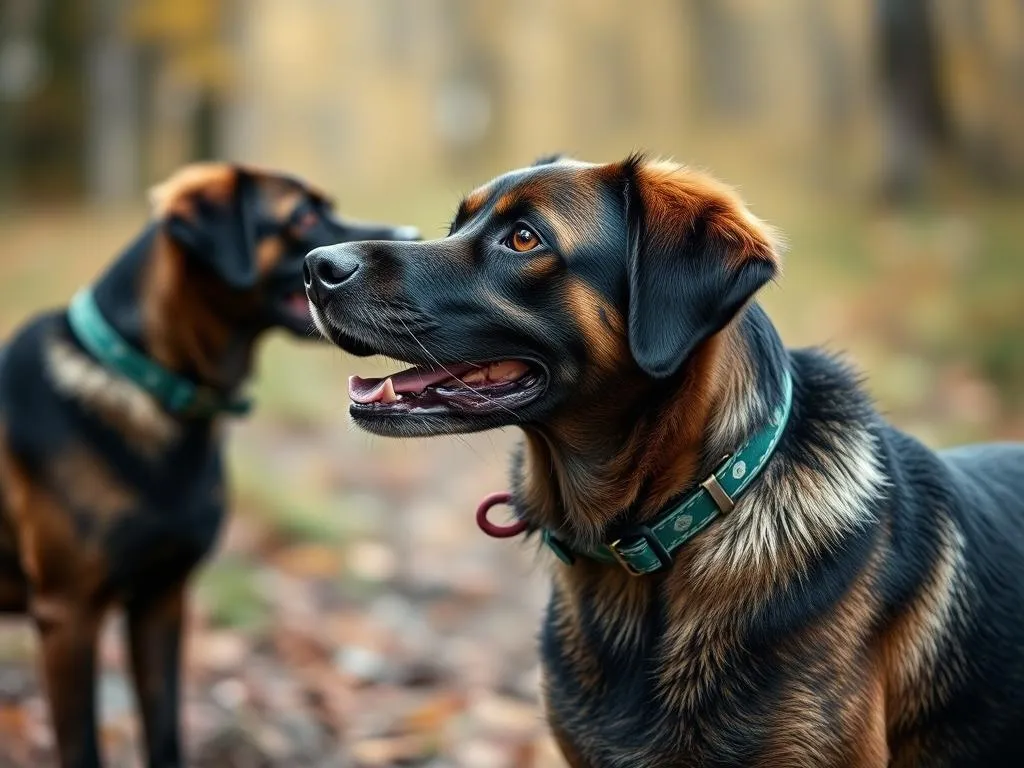
Introduction
Blindness in dogs can present various challenges for both the pet and its owner. Understanding how to adapt the environment is crucial for ensuring comfort and safety. Blindness can stem from a variety of causes such as genetic factors, injury, or health conditions like cataracts and glaucoma. Although it’s estimated that around 1 in 100 dogs experience some form of blindness, the overall impact on their quality of life can be significant.
Dogs rely heavily on their sense of smell to navigate their world. With an olfactory system that is estimated to be anywhere from 10,000 to 100,000 times more sensitive than humans, scent plays a crucial role in how dogs interact with their environment. For blind dogs, scent markers can provide vital cues, helping them to navigate safely and find comfort in their surroundings.
This article aims to educate dog owners about the use of scent markers for blind dogs and provide practical solutions to enhance their lives through the effective use of scent.
Understanding Blindness in Dogs
Causes of Blindness
Blindness in dogs can arise from various genetic, traumatic, or health-related factors. Some common causes include:
- Genetic Factors: Certain breeds are predisposed to conditions that can lead to blindness, such as Progressive Retinal Atrophy (PRA).
- Injury or Trauma: Accidents or injuries can result in damage to the eyes or optic nerves.
- Health Conditions: Common health issues like cataracts or glaucoma can lead to vision loss if left untreated.
Behavioral Changes in Blind Dogs
Blindness can lead to several behavioral changes in dogs:
- Increased Anxiety or Fear: Many blind dogs may feel more anxious due to their inability to see. This can manifest in fear of new environments or unfamiliar sounds.
- Changes in Social Interaction: Blind dogs might become more reserved or may avoid interactions with other pets or people.
- Altered Play Behavior: Playtime may change significantly, as blind dogs may rely more on scent and sound to engage with toys or other animals.
Importance of Supportive Care
Ensuring a blind dog feels safe and understood requires a multi-faceted approach:
- Emotional Support: Providing comfort through affection and reassurance is essential.
- Environmental Modifications: Making changes in the home to prevent accidents and guide the dog can greatly enhance their quality of life.
- Training Techniques: Implementing specific training methods can help blind dogs adapt and thrive.
The Science of Scent
Canine Olfactory Abilities
Dogs possess an extraordinary sense of smell, which allows them to detect scents at incredibly low concentrations. Their olfactory receptors number around 220 million, compared to a human’s 5 million. This heightened sense enables dogs to distinguish between different odors and understand their environment through scent.
The Impact of Scent on Behavior
Scent not only helps dogs navigate but also serves as a calming influence. Familiar smells can soothe anxiety and provide comfort, while specific scents can signal different locations or objects, aiding in navigation.
What are Scent Markers?
Definition and Purpose
Scent markers for blind dogs are specific scents applied to various areas or objects to help guide them through their environment. These markers create a scented pathway, allowing the dog to associate different smells with locations, thus enhancing their ability to navigate safely.
Types of Scent Markers
Scent markers can be categorized into two primary types:
- Commercial Scent Markers: These include sprays and oils specifically designed for dogs. They are usually safe and can offer a variety of scents.
- Natural Scent Markers: Essential oils, herbs, or even familiar scents from family members can serve as excellent markers. These options can be more personalized and comforting for the dog.
How to Implement Scent Markers for Blind Dogs
Identifying Key Areas in the Home
When implementing scent markers for blind dogs, it’s essential to identify key areas in the home where these markers can be applied. Common areas include:
- Entrances: Marking doorways can help the dog identify when they are entering or exiting a room.
- Furniture: Applying scents to furniture can create a mental map for the dog, aiding them in navigation.
Consistency in placement is vital. Always apply the same scent to the same areas to help your dog develop an understanding of their environment.
Choosing the Right Scent
When selecting scents, consider the following factors:
- Dog’s Preferences: Just like humans, dogs have individual preferences for certain scents. Observe your dog’s reactions to various aromas.
- Safety: Ensure that any scent used is non-toxic and safe for dogs. Avoid essential oils that may be harmful to pets.
Recommended scents include lavender for relaxation, chamomile for anxiety, and vanilla for a comforting atmosphere.
Application Techniques
Applying scent markers effectively involves the following tips:
- Dab or Spray: Use a cotton ball to dab or a spray bottle to apply the scent in the identified areas.
- Maintain Scent Strength: Reapply scents regularly to ensure they remain potent. Depending on the type of marker, this could be weekly or bi-weekly.
Training Your Blind Dog with Scent Markers
Basic Commands and Scent Association
Training your blind dog with scent markers can be incredibly effective. Here are some techniques:
- Teaching Commands Using Scent: Pair a specific scent with a command. For example, use a unique scent when teaching “sit” to create a strong association.
- Examples of Scent-Based Cues: Use distinct scents for different commands, like a citrus scent for “come” and a mint scent for “stay.”
Creating a Scented Pathway
Setting up a scented pathway can help guide your dog:
- Scent Trail for Navigation: Create a trail leading to important areas, such as food or water bowls. This can be done using a consistent scent to guide them.
- Using Scent Markers for Recall Training: Reinforce recall by using a specific scent when calling them back, helping them associate the smell with returning to you.
Reinforcing Positive Behavior
Positive reinforcement is key when working with blind dogs. Use a reward system to encourage exploration and interaction with marked areas. Be patient and consistent, as adapting to scent cues may take time.
Enhancing the Environment for Blind Dogs
Scent and Safety
Scent markers can significantly enhance safety for blind dogs. By marking potential hazards or important areas, you can help prevent accidents and create a safer living space. Consider using scents to mark stairs, sharp edges, or doorways.
Combining Scent with Other Sensory Cues
Integrating scent with other sensory cues can enhance your dog’s understanding of their environment:
- Using Sound and Touch: Combine scents with sounds, like a bell or gentle touch, to help your dog learn to navigate more effectively.
- Multi-Sensory Training Approaches: Use a combination of scent, sound, and touch during training sessions to create a comprehensive learning experience.
Case Studies and Real-Life Experiences
Testimonials from Dog Owners
Many dog owners have successfully implemented scent markers for blind dogs. For example, one owner reported that their visually impaired lab quickly learned to navigate the home using distinct scents placed around key areas. Another shared how their adopted blind dog became more confident and less anxious after they began using scent markers.
Expert Opinions
Insights from veterinarians and animal behaviorists emphasize the importance of scent in helping blind dogs adapt. Experts recommend regular training sessions and consistent scent placement to foster a supportive environment, allowing blind dogs to thrive.
Conclusion
In summary, adapting to a blind dog’s needs is essential for enhancing their quality of life. Scent markers for blind dogs can play a significant role in improving their navigation skills, reducing anxiety, and providing comfort. By implementing these markers thoughtfully and consistently, dog owners can create a loving and supportive environment for their visually impaired companions.
Exploring the world of scent markers opens up new avenues for enriching your blind dog’s life. Remember, the journey may take time, but the rewards of seeing your dog thrive in their environment are immeasurable.









